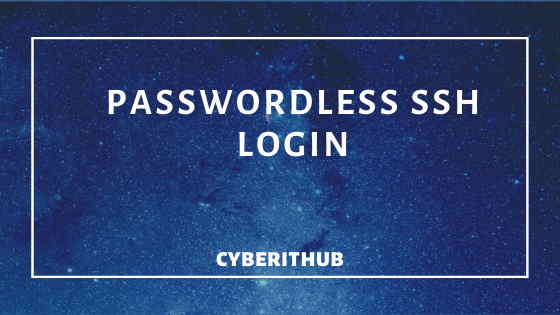

- SSH PROXY PASSWORDLESS PASSWORD
- SSH PROXY PASSWORDLESS PC
SSH PROXY PASSWORDLESS PASSWORD
Shouldn't even be asked for a password when you log in. Once you have saved the file and restarted your SSH server, you Replace it with a line that looks like this: PasswordAuthentication no Your sshd_config file: #PasswordAuthentication yes To disable password authentication, look for the following line in It's recommended to disable password authentication unless you have a
SSH PROXY PASSWORDLESS PC
Your own computer from a friend's PC without pre-approving the PC, orįrom your own laptop when you accidentally delete your key. Improves your security, but makes it impossible for you to connect to If you disable password authentication, it will only be possible toĬonnect from computers you have specifically approved. Your computer with an SSH key, you should disable password Hard to guess as a normal SSH key, a password would have to containĦ34 random letters and numbers. Recommended solution is to use SSH keys instead of passwords. Hour, and guess even the strongest password given enough time.

An attacker can try thousands of passwords in an Online attackers will look for an SSH server, then start guessing It'll prompt for your SSH password, enter it and if all completes successfully you'll be able to access the machine via ssh without needing a password.īecause a lot of people with SSH servers use weak passwords, many
Next copy the public key to your server with ssh-copy-id replacing user with your remote user and server with the machine DNS name or IP address. The pub file is what goes on the servers, the private key ( id_rsa) is what stays with you and is how you identify yourself. First create your SSH Keypair by running ssh-keygen this will create an id_rsa and id_rsa.pub file. You can opt to protect keys with a passcode if you wish, but this can be left blank allowing totally password-less SSH access. You'll need to generate an SSH Keypair which will allow you to identify you as yourself without using a password. This assumes you already can successfully connect to your server via SSH. To make sure we haven't added extra keys that you weren't expecting. Now try logging into the machine, with "ssh and check in: Your identification has been saved in /home/not-marco/.ssh/id_rsa. Example ssh-keygenĮnter file in which to save the key (/home/not-marco/.ssh/id_rsa):Ĭreated directory '/home/not-marco/.ssh'.Įnter passphrase (empty for no passphrase): Then you'll need to copy the new key to your server: ssh-copy-id or if your server uses custom port no:Īfter the key is copied, ssh into the machine as normal: ssh can now login without entering a password from the particular machine you executed the commands at. Execute this command (if you already have an SSH key, you can skip this step): ssh-keygen







 0 kommentar(er)
0 kommentar(er)
